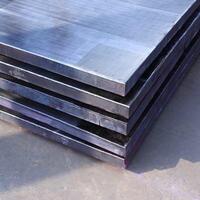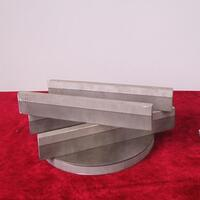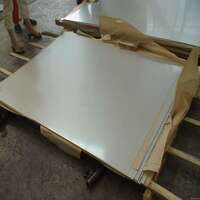1. Introduction
Just 36 hours ago, NASA quietly announced a materials breakthrough for its next-gen deep-space habitat: a titanium-clad aluminum composite that resists micrometeorite impacts while shedding weight like a sprinter at the Olympics. While most of us associate ‘metal clad‘ with corrugated steel facades or that trendy corten steel siding on Instagram, the real magic happens in labs, reactors, and rocket silos—places where failure isn’t an option, and neither is boring old mild steel plate.

So, what is metal clad, really? Forget the DIY roofing tutorials for a sec. At its core, clad metal meaning refers to a composite material where two or more metals are bonded—mechanically, metallurgically, or via explosion welding—to combine the best properties of each. Think of it as a metallurgical power couple: stainless steel’s corrosion resistance married to aluminum’s featherlight charm. And yes, they’ve even got prenups (in the form of ASTM standards).
2. The Hidden Superpowers of Clad Metals
2.1. Aerospace: When Weight Is Worth Its Weight in Gold
In aviation, every gram counts. That’s why you’ll find aluminum clad stainless steel in jet engine housings and 2024-T3 clad aluminum sheets in wing skins. The aluminum provides lightness; the stainless steel layer adds fire resistance and structural integrity. Bonus: it doesn’t melt when your coffee spills near the auxiliary power unit.
Engineers also love 7075-T6 clad aluminum plates for landing gear components—strong like a gym bro, but smart enough to not corrode mid-flight. And let’s not forget copper-nickel clad wiring (aka Cu clad wire) in avionics, where conductivity and oxidation resistance are non-negotiable.
2.2. Nuclear and Chemical Plants: Where Corrosion Goes to Die

Imagine a reactor vessel that must survive decades of neutron bombardment, acidic coolants, and temperatures that would melt your grill. Enter titanium clad steel plates and Inconel 625 weld overlays. These aren’t your average metal clad building materials—they’re engineered to laugh in the face of hydrofluoric acid.
Clad metals like stainless clad aluminum or nickel-brass clad copper are used in heat exchangers where thermal conductivity meets corrosion resistance. And yes, they cost more than your car—but so does a nuclear meltdown.
2.3. Marine & Offshore: Saltwater’s Worst Nightmare
Boats don’t just float—they fight. Constantly. Against salt, biofouling, and galvanic corrosion. That’s why shipbuilders use cupro-nickel clad pipes and aluminum-clad steel wire for mooring systems. Even the humble aluminum clad pipe insulation gets a promotion here, keeping cryogenic LNG lines frosty without turning into Swiss cheese.
And if you’ve ever admired a sleek yacht with a zinc metal siding accent? That’s not just for looks—zinc acts as a sacrificial anode, taking one for the team so the hull stays intact.

3. From Facade to Function: The Everyday Meets the Extreme
Sure, your neighbor’s metal clad house with its vertical standing seam metal siding and PAC CLAD HWP roof looks sharp. But that same PAC CLAD standing seam system shares DNA with the alloy-clad panels used in cleanrooms and semiconductor fabs—where even a speck of rust could ruin a $10 million wafer batch.
Even ‘simple’ products like metal clad electrical wire (yes, the kind that can be surface-mounted in Pennsylvania commercial buildings) rely on aluminum-clad steel for strength and copper for conductivity. It’s the unsung hero behind your office’s flickering LED lights.
And let’s talk cost: corten steel siding cost might sting your wallet, but compare it to replacing a corroded boiler plate steel in a chemical plant every six months. Suddenly, that corten siding cost seems like a spa day.
4. The Wild World of Specialty Cladding
Not all clad is created equal. Some exotic combos include:
- Titanium plate bonded to 316L stainless steel plate for biomedical implants
- Chrome carbide overlay on manganese steel plate for mining conveyor belts
- Gold-coated nickel sulfamate plates for satellite electronics (because space deserves bling too)
- Aluminum diamond tread plate with stainless steel checker plate inlays for luxury yacht decks
Then there’s electroless nickel plating on brass plates for engraving—perfect for those fancy metal nameplates that say ‘CEO’ but really mean ‘professional coffee sipper.’
5. Conclusion
So next time you see a metal clad roof or a steel facade glinting in the sun, remember: that same technology might be shielding a Mars rover or keeping a fusion reactor from turning into a very expensive paperweight. Metal clad isn’t just about looks—it’s about survival in the harshest environments on (and off) Earth. And honestly, that’s way cooler than any standing seam siding trend.
Our Website founded on October 17, 2012, is a high-tech enterprise committed to the research and development, production, processing, sales and technical services of ceramic relative materials such as What. Our products includes but not limited to Boron Carbide Ceramic Products, Boron Nitride Ceramic Products, Silicon Carbide Ceramic Products, Silicon Nitride Ceramic Products, Zirconium Dioxide Ceramic Products, etc. If you are interested, please feel free to contact us.
